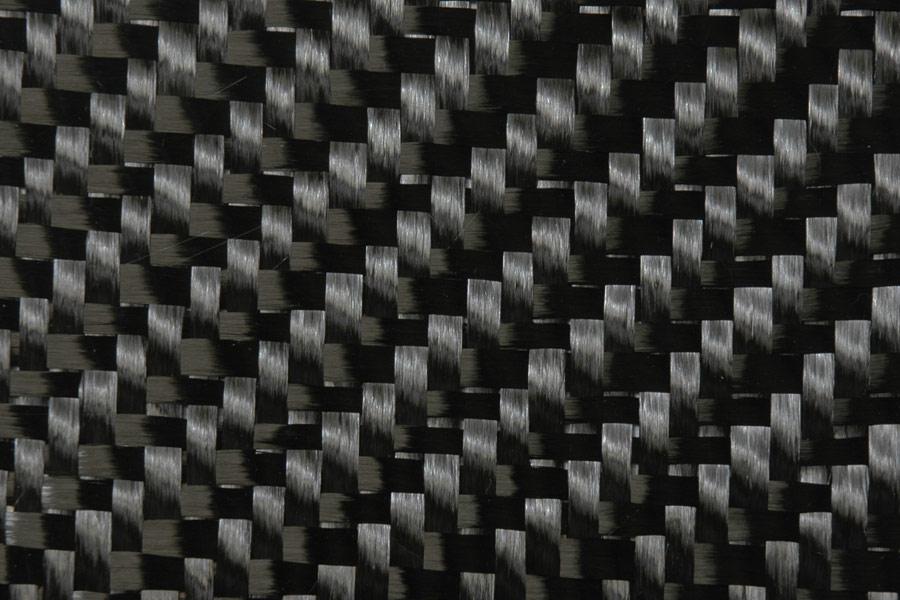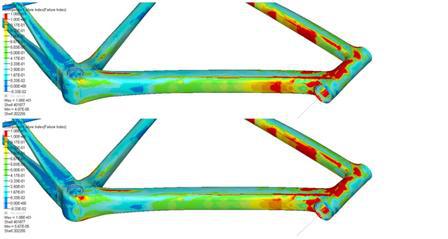Because of its strength and light weight, Carbon Fibre technology has taken hold of the cycling world, but it does have a downside, as Max Osborne explains.
Most of us know the meaning of ‘carbon’ and ‘fibre’, but when they’re brought together in a manufacturing process the combination holds unprecedented benefits for products as diverse as the aircraft in our skies and the bicycles on our roads.
So what is this seemingly magical product?
Carbon fibre reinforced plastic (CFRP) consists of thousands of individual strands of raw carbon filaments that are bundled together and typically woven into a fabric that is coated in a resin or ‘plastic’. A stack of multiple fabric layers are then cured at high temperature and pressure in a process which compacts the fibres and hardens the resin to develop a stiff and strong composite material.
The structural properties are mostly provided by the carbon fibres themselves, with the plastic matrix serving to stabilize the material and hold the desired final shape.

Close-up of a woven carbon fibre fabric
Why Carbon?
In a nutshell, the benefits of Carbon Fibre as a material for bikes over traditional metallic materials such as aluminum, steel or even titanium is that it is generally lower weight, more able to be tailored for stiffness and other frame characteristics, and less susceptible to corrosion and fatigue.
The design of the carbon fibre laminate allows the structural properties to be better customized than a metallic material where properties are generally the same in all directions.
During manufacture the plies of carbon fibre are stacked on top of each other to form a laminate, and it is the thickness and orientation of those plies that define the properties such as stiffness and strength.
Through specific design of the layup, engineers may locally increase stiffness in areas such as the bottom bracket and similarly save weight in regions where loads are lower, or reduce the stiffness to improve the ride comfort of the frame.

Computer analysis of stresses in a carbon fibre composite bike frame – image courtesy Cervelo (www.cervelo.com)
Another benefit of carbon fibre as a frame material is improved resistance to fatigue cracking from repeated application of loads throughout its lifetime. Whereas metal can (and eventually, will) develop cracks when cycled (no pun intended) at comparatively low levels of applied stress, the fatigue life of carbon fibre is essentially infinite because it need to be cycled in extremely high loads to suffer the same type of fatigue cracking.
In addition to the weight savings this is one of the reasons that carbon fibre is used in modern airplanes - it doesn't fatigue and develop cracks, and therefore needs less maintenance.
Drawbacks
While there are significant benefits of carbon as a frame material, there are also some drawbacks. Apart from higher costs to manufacture (although these are steadily going down) the main compromise is comparatively poorer damage tolerance and lower impact resistance when compared with metal.
When carbon fibre suffers an impact, the layers of carbon fibre can debond from each other. If no longer tightly compacted in a plastic matrix then the strength is significantly reduced and it may subsequently fail at much lower loads.
Metal is ductile and so a metallic bike frame with some local damage can redistribute load around the damage site through local yielding and plastic deformation, whereas carbon is brittle and has little or no yield behavior, so tends to fracture somewhat catastrophically.
Frame designers usually account for some levels of likely accidental damage which may occur in areas such as the top tube by adding additional plies, however impact resistance is inherently one of the poorer structural properties of carbon fibre and if a frame suffers a crash it should be professionally inspected as sub-surface damage to the carbon layers may be completely invisible.
Usually carbon fibre failure will occur at the site of pre-existing damage and so while it may appear ‘spontaneous’ it is actually occurring at an already damaged location. Many bike shops and manufacturers will recommend that a carbon bike frame that has been in a crash be completely replaced (a similar warning applies when purchasing a second hand carbon bike – buyer beware!)
In the last five years carbon has essentially become the standard material for performance road bikes and is gaining traction for consumer bike components such as front forks and even lighter weight mountain bikes, although it is the lower impact resistance discussed above that somewhat limits its practicality for these applications.





